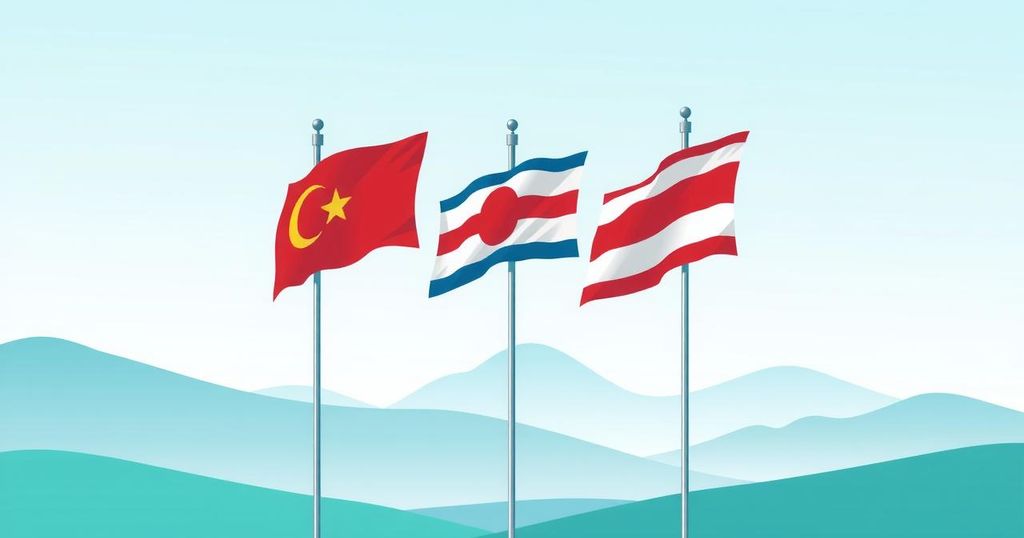Kyrgyzstan’s President Sadyr Japarov proposed a unified visa for Central Asia, similar to the Schengen visa, to facilitate travel and enhance tourism. This initiative follows a border agreement with Tajikistan and aims to align immigration policies among Kazakhstan, Kyrgyzstan, Tajikistan, Turkmenistan, and Uzbekistan. While challenges remain, particularly regarding Turkmenistan’s participation, the proposal could reshape regional connectivity.
The proposal for a unified visa for Central Asia, introduced by Kyrgyzstan’s President Sadyr Japarov, aims to enhance travel among Kazakhstan, Kyrgyzstan, Tajikistan, Turkmenistan, and Uzbekistan. This initiative draws inspiration from Europe’s Schengen visa, seeking to simplify border crossings, promote tourism, and foster regional cooperation during a period of increasing interest in Central Asia as a tourist destination.
President Japarov announced the proposal following a significant border agreement with Tajikistan’s President Emomali Rahmon. He emphasized the need for Central Asian nations to implement a visa-free regime and introduce a single visa for international visitors, allowing unrestricted travel throughout the region, akin to the Schengen visa system.
The idea of a regional visa system is not unprecedented; prior efforts have been made, including the 2018 “Silk Road Visa” initiative between Kazakhstan and Uzbekistan which did not progress. Subsequent discussions in 2020 were hindered by the COVID-19 pandemic and ongoing negotiations. As of 2022, both Uzbekistan and Kazakhstan were still endeavoring to finalize the legal structure for a potential regional visa.
Currently, Central Asia’s growing status as a tourist hub places additional emphasis on realizing this unified visa. However, challenges remain regarding the harmonization of immigration policies, border security measures, and administrative agreements among the five nations. The experience from the European Schengen Zone underscores the intricacies involved in managing external borders and migration flows that need careful consideration.
Significantly, Turkmenistan’s strict entry policies present a considerable obstacle, as its involvement in this proposal is uncertain. The country’s decision could be pivotal in determining the viability of the unified visa initiative. Japarov perceives this visa system as a pathway to achieving enduring regional stability, particularly after resolving long-standing border disputes.
While the initiative is in its nascent phase, the responses from regional leaders will be critical in determining its trajectory. If successful, the unified visa could create a more interconnected and accessible Central Asia, enhancing movement and collaboration in the region.
The proposed unified visa for Central Asia, as championed by Kyrgyzstan’s President Sadyr Japarov, seeks to promote tourism and strengthen regional ties. Although previous attempts have faced challenges, the recent diplomatic progress signals a potential for cooperation. The involvement of all five Central Asian nations, particularly Turkmenistan, is crucial for the success of this initiative. Should it be realized, the unified visa could significantly transform accessibility across Central Asia.
Original Source: www.ndtvprofit.com




